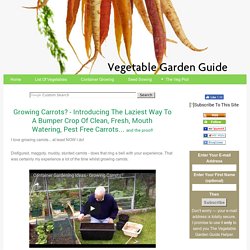

December, 2008. December 31st, 2008 Mr Chiots and I are videographers by trade (check out some of what we do at 2nd Mile Productions).

We recently shot a promotional video for some photographer friends of ours (Linczak Photography). Instead of paying us they gave us one of their old cameras and a lens. So we traded up, literally. Now my little Sony Cybershot will be in semi-retirement. I’m sure it will still be traveling around the gardens in my back pocket and in my purse whenever I’m out and about (especially at farmer’s markets), but I’ll be using the new camera for some of my photos (those photos yesterday of the pets were some of the first ones with the new camera, more to come later this week).
If any of you are looking for a great little point and shoot I would highly recommend the Sony Cybershot 7.2MP Digital Camera with 4x Optical Zoom at $129.99 you can’t go wrong. Now, on to the new camera (well new to us), it’s a Cannon 20D and we got a 50mm lens as well. December 30th, 2008. (2) Watch - Discover. Carrot.
Growing Carrots In Plant Containers Makes For Easy Cultivation. I love growing carrots... at least NOW I do!

Disfigured, maggoty, muddy, stunted carrots - does that ring a bell with your experience. That was certainly my experience a lot of the time whilst growing carrots. Container Gardening Ideas Video - Planting Carrots in Containers Pots, troughs, growing bags etc. are one of the answers to growing vegetables in your garden if you haven't got the room for a large vegetable plot - like I haven't.
It is the ONLY answer if have a balcony and no garden... and great for the kids to grow there own in them too. 263K+Save So now, growing carrots is a real pleasure, and that is because I do use plant containers. The advantages of growing carrots in containers are: No poor soil problems if using shop bought compost.No weeding and digging concerns.And no soil pest problems. What you do need to keep in mind though is a little more attention will need to be given to watering and feeding.
Growing Fall and Winter Carrots. Carrots are one of those vegetables that you can never have enough of.

After all, they’re tasty and nutritious. Here’s how to grow carrots year-round so you can eat them in fall and winter, too. Posts may contain affiliate links, which allow me to earn a commission at no extra cost to you. This helps keep costs down so that I can continue providing high quality content to you for free. I appreciate your purchase through the links! Succession Planting for Year-Round Carrots To grow carrots year-round, follow the cycle of the solstices and equinoxes: Sow seeds every 3 weeks, Spring Equinox (March) through the Fall Equinox (September). Spring: Begin sowing around the Spring Equinox (March). Summer: Harvest spring-sown seeds around the Summer Solstice (June).
Fall: Harvest summer-sown seeds around the Fall Equinox (September). Winter: Harvest the first fall-sown seeds around the Winter Solstice (December), and continue harvesting until the Spring Equinox (March). Tips for Growing Great Carrots. October 4th, 2011 Yesterday, some readers asked if I had any tips for growing great carrots, so I thought I’d share a few things that work well for me.

I’m by no means an expert carrot grower and sometimes things work well in one place and not in another. If you’ve had difficulties growing carrots, keep trying new varieties and different methods, keep amending your soil, eventually you’ll find a variety that works for you. Here are a few tips I’ve learned. Carrots like loose rich soil, preferably a little sandy, and soil that’s been worked quite deeply. Carrot seeds take a while to germinate and they like even moisture during the process. Carrot seeds like to be planted close to the surface of the soil, the general rule: plant one and a half to two times the width of the seed. I usually plant one big wide row of carrots four feet wide and about ten feet long. As with all root vegetables, carrots appreciate a lot of phosphorus in the soil.